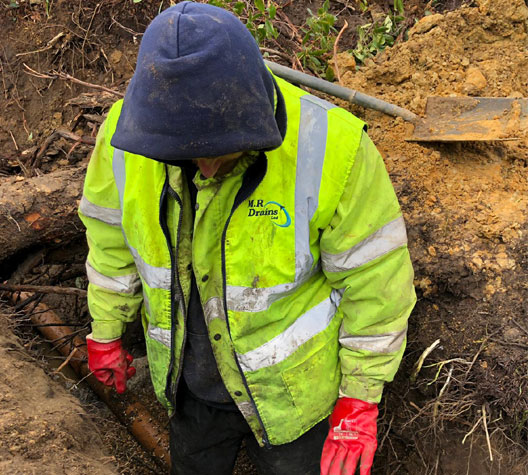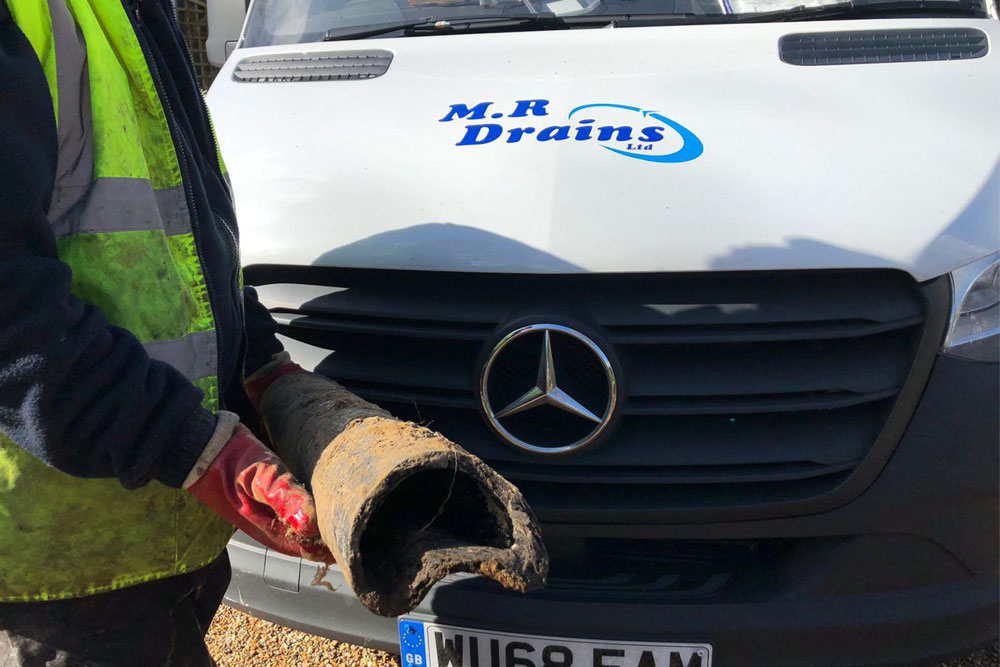
Pitch fibre pipes were mostly used from the 1950s to the early 1970s. Pitch fibre pipes were considered ideal as they were relatively inexpensive in comparison to other clay materials about at this time, they came in 8 foot lengths meaning they were faster to install and easier to handle. Pitch fibre is made of wood cellulose fibre impregnated with carefully refined inert coal tar pitch, under vacuum and pressure (approx. 25% fibre to 75% pitch by weight).
If you are ever in the company of a drainage contractor when he lifts a manhole cover and see`s the jet black matt coating of a pitch fibre channel pipe staring up at him, you will see the corner of his mouth lift gently into a wry smile and a little twinkle will appear in his eye. Nothing quickens the pulse of a drain man like pitch fibre, apart from perhaps a 40ft weeping willow sat adjacent to a manhole cover.
Pitch Fibre pipes were thought to be a modern drainage system, however, any drainage expert would say that it is one of the worst types of drainage. It is recommended you check to see if you are using this type of pipe and get them replaced or repaired before it costs you a fortune in expensive repairs. Here are some of the problems caused by pitch fibre pipes.
Pitch Fibre Drainage Clearance
As you would expect these systems are vulnerable to blocking occasionally and the act of clearing a system whether that be by rodding, mechanical rodding or high pressure water jetting can accelerate the deterioration of the system by stripping the blistered internal layers of the pipe wall.
As the layers are removed the questionable structural integrity of the pipe is reduced even further.

Repairing Pitch Fibre Pipe Work
Deformed pitch fibre pipe, now we have several repair methods available when pitch fibre systems fail, which method should be used can only be determined after the system has been surveyed and assessed.
If the main defects are internal blistering and de lamination with no major loss of shape then the system can be re-rounded and relined using a Cipp lining method. However if there has been major deformation to the system then pipe bursting may prove to be a better option for renewal and of course there is always the traditional excavation method.
Each method has its own merits and more often than not excavation works will be required to some degree usually where junctions enter onto systems, as always a detailed CCTV Survey should be undertaken so that the best method or repair is utilised.
Are You Insured For Defective Pitch Fibre Pipe Work?
This is a topic we are frequently contacted over as insurance companies tend to knock back a claim once they discover that the defective drain is constructed from pitch fibre. However the administration has made a couple of rulings that would seem to favour the insured in such cases.
The argument from the insurer`s is that pitch fibre is a poor product with a limited life span that starts to deteriorate from the minute it is installed below ground even when installed to the manufacturers recommendations, the administration however feel that there is a certain amount of good faith involved as the insurer are happy to take your premium each month on the basis that you have a system constructed from a suitable material. The fact that pitch fibre has been used only comes to light when a problem occur and this is usually the first that the home owner knows about it.
In the ideal world when you change your policy the insurer`s should enquire if you have a pitch fibre system and of course 99% of home owners would not have a clue, so you would have a situation where a drain inspection is required to find out what the system is constructed from which of course is never going to happen.
At M.R Drains, we ensure pipes by using a no dig technique to reform and reline problem pitch fibre pipes, high pressure water jetting to ensure pipe walls are clean and we also carry out a CCTV survey for safe & permanent solution for any drain problems.

